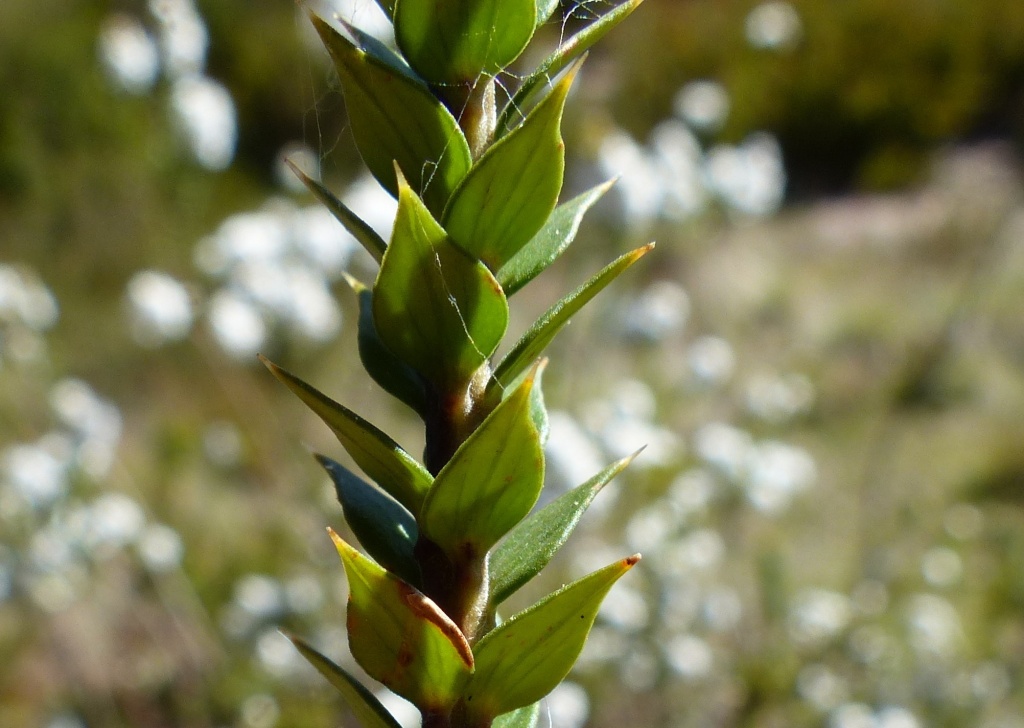Epacris breviflora
Stapf Drumstick HeathErect shrub to c. 1.5 m high. Branchlets shortly pubescent. Leaves erect to spreading, ovate, 4–10 mm long, 2–5 mm wide, glabrous (rarely scabrous-pubescent), flat or concave, midvein ± keeled distally beneath; apex often recurved, acuminate with an apical mucro; margins minutely serrulate; base cuneate; petiole 0.5–1 mm long. Flowers subsessile in axils, forming terminal clusters or (rarely) extending shortly down branches; bracts 10–23; sepals elliptic, 3.2–5 mm long, acute; corolla white, campanulate, tube 1.7–3 mm long, glabrous, lobes (2–)2.5–4 mm long, obtuse to subacute; anthers enclosed or partly exserted; ovary glabrous, nectary scales truncate, style straight-sided, glabrous, 0.3–1.5(–2) mm long. Flowers Nov.–Jan.
VRiv, CVU, NIS, EGU, HSF, HNF, MonT, VAlp. Also Qld, NSW, ACT. Occurs in subalpine and montane sphagnum bogs and stream margins, descending to lower elevations in areas subject to cold air drainage (e.g. Shelley, Chiltern), apparently absent from the Baw Baw Plateau. Occasionally found in moist sheltered rock crevices on mountain ranges.
Albrecht, D.E. (1996). Epacridaceae. In: Walsh, N.G.; Entwisle, T.J., Flora of Victoria Vol. 3, Dicotyledons Winteraceae to Myrtaceae, pp. 464–509. Inkata Press, Melbourne.
 Spinning
Spinning

